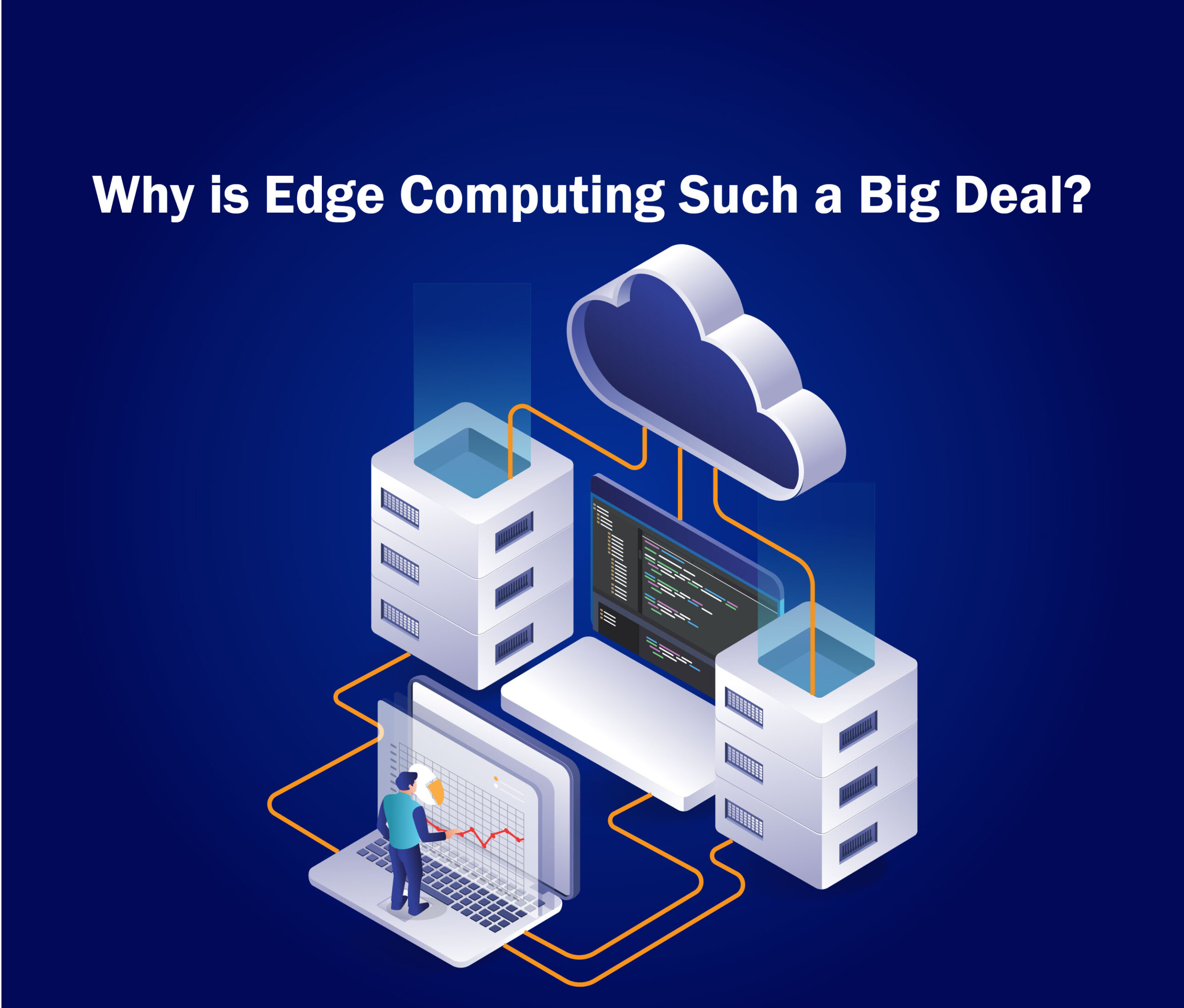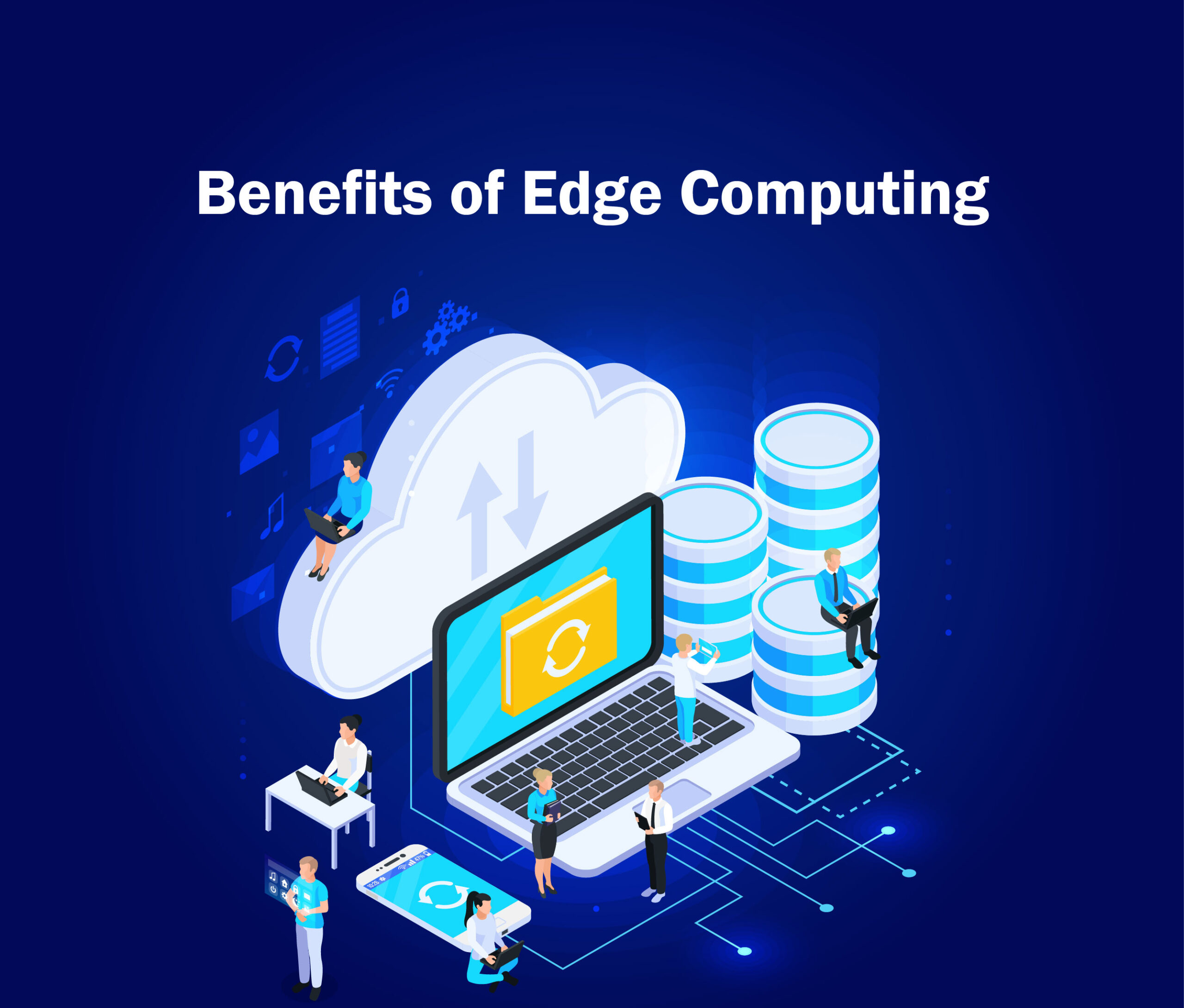Remember those massive, clunky computers from back in the day? They’ve come a long way. They’ve gotten smaller, but their power has grown immensely. In the past, we used to think that big data warehouses and server farms were the key to super-fast computing. But now, our attention has shifted to something called “the cloud” or offsite storage. Think Netflix, Spotify, and other tech companies – they’ve built their whole business around the cloud.
But here’s the catch. Cloud computing has a problem – it’s like sending your data on a long road trip. The farther your data has to travel to these cloud centers, the longer it takes. That’s where edge computing steps in.
It essentially brings the computing power closer to you, the end user. It’s like having your own mini-computer right where you need it. This means less waiting and more action. So, let’s get started and understand everything about this marvelous technology.
What is Edge Computing?
 Edge computing is a new approach to computing that involves bringing storage and processing capabilities closer to the edge of the network. This means that these resources are located closer to users, devices, and data sources. Instead of centralizing computing power in a data center far away, this technique brings data processing closer to where it’s generated. This results in faster and more substantial data processing, which translates to real-time, action-oriented outcomes.
Edge computing is a new approach to computing that involves bringing storage and processing capabilities closer to the edge of the network. This means that these resources are located closer to users, devices, and data sources. Instead of centralizing computing power in a data center far away, this technique brings data processing closer to where it’s generated. This results in faster and more substantial data processing, which translates to real-time, action-oriented outcomes.
This approach offers several unique advantages when compared to the traditional model, where all the computing is done in a centralized, on-premise data center. By placing computing at the edge, companies can better manage their physical assets and create new, interactive human experiences. Examples of use cases include self-driving cars, autonomous robots, the analysis of data from smart equipment, and even automated retail systems.
The various components in this realm include:
- Edge Devices: These are devices that we use daily, such as smart speakers, watches, and phones. They collect and process data locally, interacting with the physical world. Internet of Things (IoT) devices, point of sale (POS) systems, robots, vehicles, and sensors can all be considered edge devices if they perform local computation and communicate with the cloud.
- Network Edge: Edge computing does not need a separate “edge network” to function, although it can be located on a router or individual edge devices. When a separate network is used, it serves as an intermediary between users and the cloud. This is where 5G technology becomes essential. 5G provides powerful wireless connectivity, offering low latency and high cellular speeds. This opens up exciting possibilities like autonomous drones, remote surgery or telesurgery, and smart city projects, where fast response times are vital.
- On-Premises Infrastructure: These systems manage local operations and facilitate connections to the network. They can include servers, routers, containers, hubs, or bridges.
Simply put, this computing technology is a forward-looking approach that brings computing power closer to where it’s needed, resulting in quicker data processing and enabling a wide range of innovative applications.
Why is Edge Computing Such a Big Deal?
Right now, computing is extensively required in places like hospitals, factories, and stores. They process super-important data and run things that need to work perfectly all the time. These places need computer solutions that are really fast and don’t rely on an internet connection.
But here’s the cool part: This has the power to completely change how businesses work, not just for one industry or job, it can shake things up everywhere. From making shopping better to helping workers learn from machines, and even making our surroundings safer and comfier.
The secret behind all of this is edge computing. It lets companies run their computer programs right where they need them, without any delays. This means businesses can come up with new ideas, launch products faster, and even discover new ways to make money.
Benefits of Edge Computing
 This computing technology is a game-changer for handling the massive amount of data we generate today. Here’s why it’s so great:
This computing technology is a game-changer for handling the massive amount of data we generate today. Here’s why it’s so great:
- Eliminates Waiting: It eliminates latency, which is the delay in data transfer between two points on a network by bringing those points closer, so you won’t have to wait around.
- Data Efficiency: It saves bandwidth, which is like the speed of data flow on a network. With edge computing, data servers are right where data is born, so we can do more with less bandwidth. Furthermore, Statista forecasts a whopping 75 billion IoT devices worldwide by 2025. To handle this, computing will need to be shifted to the edge.
- Beat the Traffic: Despite the internet’s evolution, the sheer volume of data from countless devices can cause major traffic jams. Computing has local storage and servers that can keep things running smoothly even if the network has a hiccup.
In a Nutshell
In a world of data-driven innovation, edge computing emerges as the catalyst for faster, more efficient operations. It’s not just a buzzword; it’s the future, bringing the power of computing closer to us, reducing delays, and shaping a world where data works in harmony with our needs.


